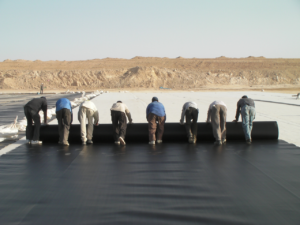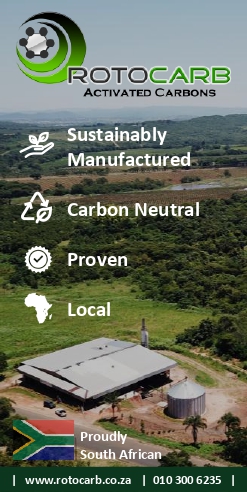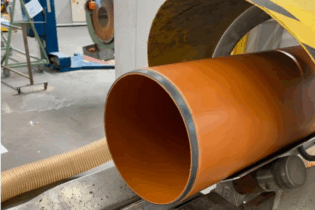The waste sector has to stay up to date with the latest trends in environmental protection. With new technologies and policies springing up around South Africa’s move towards the circular economy, older technology must be re-evaluated in favour of more efficient and cleaner practices.
However, there is no need to throw the baby out with the bath water when it comes to tried, tested, and trusted technology that works. Modern geosynthetics have been around in some form since the 1950s, and today they are still a necessity in various applications across the waste sector, including landfills, mining waste management, drainage, and construction.
Brendon Jewaskiewitz, managing director of Envitech
- Landfill basal liners – barrier systems composed of multiple layers, typically including geomembranes, geotextiles, and clay materials, to prevent leachate migration.
- Leachate ponds – containment systems for collecting leachate that will eventually be treated.
- Mine waste facilities – storage systems for the byproducts and residues of mining activities, and pollution control systems.
From beginning to end
While geosynthetics are widely used in the construction of landfills, they can be equally important in the closure and rehabilitation of a landfill. Jewaskiewitz explains, “the principle that guides the use of geosynthetics in landfill closure is generally the minimisation of leachate generation and the prevention of stormwater contamination. When a landfill is closed, it does not suddenly become environmentally neutral, there is a real need to limit the infiltration of rainfall, to manage the existing moisture regime within a landfill, and to prevent the contamination of runoff.” When a landfill is closed, there needs to be a capping and stormwater runoff management system that limits the volume of clean water reaching the waste within the landfill. “Capping is again, simple in concept, vital in application. It can be a permeable or impermeable system constructed over the waste body landfill that either allows a certain amount of infiltration or seals it off from the external environment” adds Jewaskiewitz. This capping and runoff system is also designed specifically to divert clean stormwater runoff away from the site.Geosynthetics in South Africa
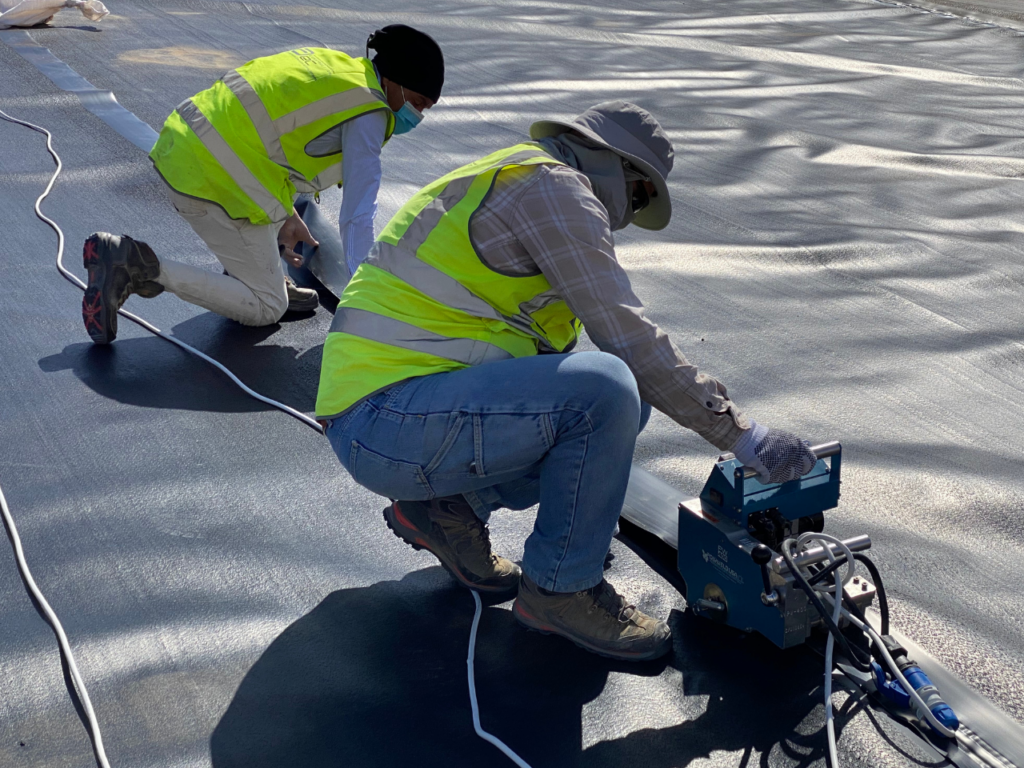 Modern geosynthetic lining systems only really gained widespread traction in South Africa during the 1980s and 1990s, Jewaskiewitz says,
Modern geosynthetic lining systems only really gained widespread traction in South Africa during the 1980s and 1990s, Jewaskiewitz says,
“This technology is particularly important in the South African context. We are generally a water-scarce country, and the prevention of leachate contamination of our groundwater is a necessity.”The use of geosynthetics in environmental protection systems is highly regulated. Jewaskiewitz breaks this down saying, “The sector relies on the overarching legal framework articulated in the National Environmental Management Act (No. 107 of 1998). Then we have the National Environmental Management Waste Act (No. 59 of 2008), and the National Norms and Standards for the disposal of waste to landfill, which deals directly with waste management and disposal.” The National Environmental Management Act (No. 107 of 1998) intends to provide for co-operative, environmental governance by establishing principles for decision-making on matters affecting the environment, institutions that will promote cooperative governance and procedures for co-ordinating environmental functions exercised by organs of state. The National Environmental Management Waste Act (No. 59 of 2008) aims to reform the law regulating waste management to protect health and the environment by providing reasonable measures for the prevention of pollution and ecological degradation and for securing ecologically sustainable development; to provide for institutional arrangements and planning matters; to provide for national norms and standards for regulating the management of waste by all spheres of government; to provide for specific waste management measures; to provide for the licensing and control of waste management activities; to provide for the remediation of contaminated land; to provide for the national waste information system, and to provide for compliance and enforcement. Jewaskiewitz goes on to say, “The nuts and bolts of the waste sector are covered in these acts and regulations, they clearly lay out what is necessary and inform best practice. For example, the Norms and Standards prescribe appropriate lining systems for various types of disposal facilities, and this accordingly informs the design, construction, and potential use of various geosynthetic materials, including quality control and quality assurance measures.”
Landfills today
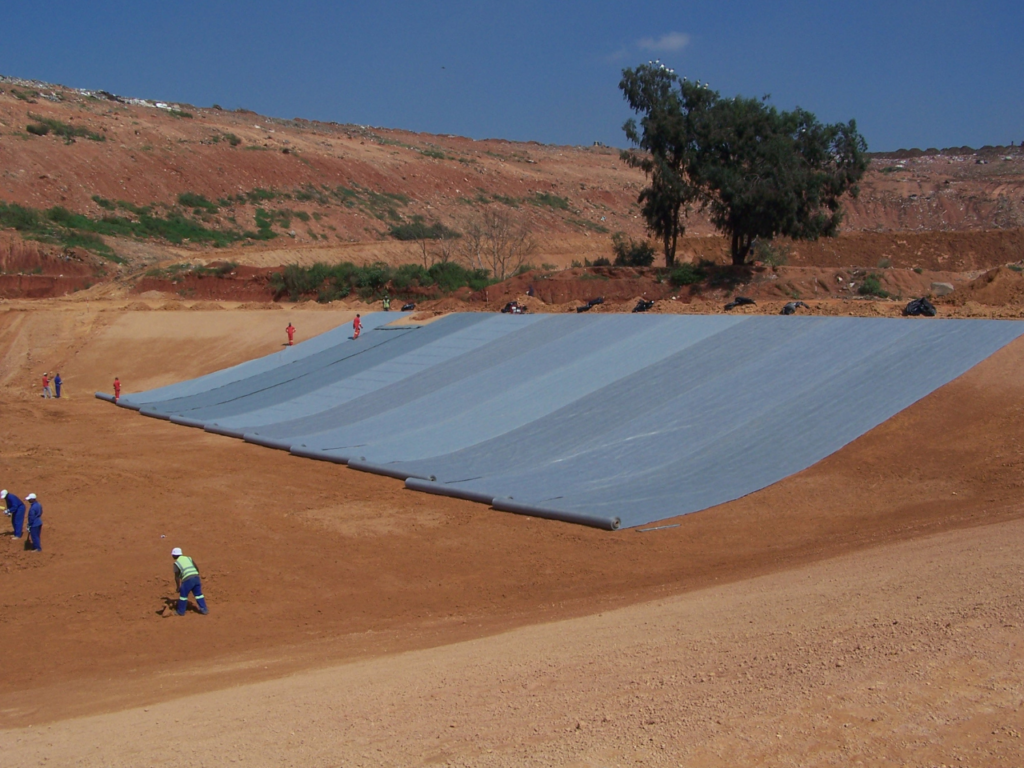 While there is considerable effort to divert waste from landfills and promote robust recycling and reuse activities in South Africa, the reality is that landfills are still a valuable and necessary piece of the waste management puzzle. “They are not the most desirable option, but landfills are still very much needed, and it is our job to ensure they are as environmentally acceptable as possible. This means incorporating the concept of sustainability and ensuring quality in engineering designs, construction and the operation of these facilities,”adds Jewaskiewitz.
Envitech, with 22 years of experience in the environmental engineering, waste and mining sectors, focuses on disposal facilities, geosynthetics, waste management, and pollution control, as well as a host of related activities, including construction quality assurance (CQA) and electrical leak location (ELL) for lining systems.
While there is considerable effort to divert waste from landfills and promote robust recycling and reuse activities in South Africa, the reality is that landfills are still a valuable and necessary piece of the waste management puzzle. “They are not the most desirable option, but landfills are still very much needed, and it is our job to ensure they are as environmentally acceptable as possible. This means incorporating the concept of sustainability and ensuring quality in engineering designs, construction and the operation of these facilities,”adds Jewaskiewitz.
Envitech, with 22 years of experience in the environmental engineering, waste and mining sectors, focuses on disposal facilities, geosynthetics, waste management, and pollution control, as well as a host of related activities, including construction quality assurance (CQA) and electrical leak location (ELL) for lining systems.
Jewaskiewitz says, “Currently Envitech is responsible for the development of a new regional landfill site in Worcester, Western Cape, for the Cape Winelands District Municipality. Construction is expected to be complete by June this year. This project is a flagship for the Western Cape and aims to lead the way in the future of solid waste management.”Envitech is also working with the Emfuleni Municipality on another regional landfill site, and they are the engineers for the Vlakfontein Waste Management facility, a hazardous waste disposal facility for Averda. Landfills are a part of the waste landscape, whether it is pleasant or not, but they can have minimal environmental impact if they are designed and operated correctly, and make use of available technologies, including geosynthetics, to protect groundwater from possible contamination.


